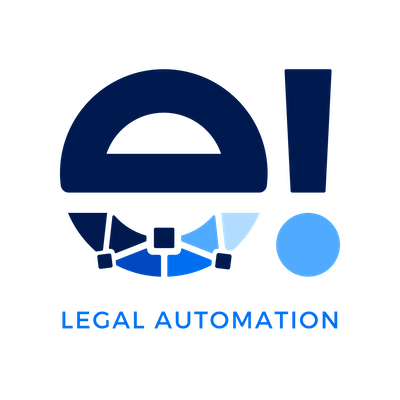Part 2: The Process
The Design Process
Moving from an idea to a solid product is no small feat. But, with the right design process in place, you can develop innovative solutions that solve problems and make life better for your target users. From ideation through launch, there are steps to take along the way to ensure success.
We will see the 5 stages in the design process that Margaret Hagan, Executive Director of the Legal Design Lab and a lecturer at Stanford Law School and the Stanford Institute of Design, defined after years of study.
Stage 1: Discovery and Understanding
To find the right solution, it’s crucial to first recognize what needs fixing. Investigate existing stakeholders and their environment before designing a custom resolution with helpful tools that can be easily accessed.
- Interviews: Ask the right questions to truly understand your users and their needs. By exploring deeper into their experiences, you can create the right solutions.
- Story-telling: Ask users to share details about their experience, you will unlock a deeper understanding of what needs fixing. Together, take an insightful journey that reveals the physical, mental and emotional impacts behind any issue.
- Observation: Get an overview of how your target audience lives day to day, so you can better identify their needs.
- Walk-a-mile: Step into the role of a stakeholder and get an up-close look at your product.
- Service Safari: To comprehend the process from its source, speaking to those who work on the frontlines and witnessing routine operations are essential.
Stage 2: Synthesize
With the information we’ve gathered, it’s now time to put together the pieces of our puzzle. We’ll take this data and turn it into structured documents that lay out a clear path forward.
- Mindmap: this tool helps to visualize all of your information in one place. It helps to form ideas and solutions quickly while keeping track of every step on their journey.
- User Persona: Using this method, you may develop a fictitious character type that corresponds to the desires, emotions, and frequent behavioural patterns of customers.
- Value Mapping: Through this mapping exercise, explore what your target user hopes to achieve in the future and how they want their journey to feel. Look at opportunities ahead instead of just focusing on current issues or needs.
Stage 3: Brainstorm & Build
This is the point in design thinking where you take your ideas and transform them into tangible solutions. Harnessing interdisciplinary teams, utilizing visuals to further bring concepts to life, brainstorming on the go and taking part as a stakeholder will guide you towards success.
Tools that can be used at this stage:
- Importance/Difficulty Matrix: this tool will help your team to decide which concepts should come to fruition. Each quadrant holds unique possibilities – from high-importance, low-difficulty tasks that are strongly encouraged, to difficult and complex projects with more rewards down the line. Take into account user interests as well as what is best for stakeholders when deciding where each project falls on the chart.
- Bullseye Diagram: This diagram puts your primary, secondary and tertiary ideas on the map. It will ensure they are recorded in order of importance, practicality and usability for maximum impact.
- 8 Frame Storyboard: With just 8 scenes, you can quickly and easily bring your idea to life! By mapping out the various ways in which users could interact with your product or complete a document using different templates, you will be able to test for success.
- Journey Map: This allows you to gain valuable insight into your customers’ experience by visually representing the stages of each interaction. This tool will help you to understand user feelings, goals, frustrations & successes along with their interaction with your current product or service.
Stage 4: Test
With your ideas in hand, it’s time to put test them. You’ll gather feedback, improve upon the good ones and abandon those that don’t deliver effective solutions for clients. Should any idea be polished or redefined, you can always go back, iterate and test again.
With early testing, you can narrow down your brainstormed ideas to discover the most promising ones. Unlock hidden potential by diving into experimentation.
Stage 5: Iterate, and Scale
It’s a tough journey to bring an idea from concept into reality, but the most exciting and rewarding part comes at the Scaling stage. Here is where you have less control over your work – introducing more partners and users along. Despite its difficulties, it is also incredibly rewarding to see initial concepts come alive.
Once you have user-tested a concept design, it is time to decide what scale and scope your first implementation should be. To prioritize features for your pilot, put all ideal features in the “Then” box, and limit to three features for “Now”. Consider what core hypothesis you are testing, what value you are offering, and how this influences the delivery of legal services and the brand experience.
The Legal Design Mechanics
Design mechanics are invaluable in uncovering the collective knowledge around a particular issue. Working with existing experiments and taking success and failure as our teachers, we can gain valuable insight into domains of legal design to create something unique based on information gathered from experts before us.
Now we will see the Principles of Legal Design:
- Empower users: People often feel overwhelmed by the complexities of navigating their way through legal proceedings. That’s why it’s so important to create a collaborative relationship with an advocate and give them access to effective tools that help simplify these procedures, while also allowing for strategic decisions along the journey.
- Provide process-based views of legal work: Create an interactive experience that educates and empowers users to understand how a system works. Through this journey, people can chart their route from the starting point to the finish line with ease.
- Encourage communication between the advocate and the client: To create a pleasant experience and mutual understanding, a lawyer can provide tools, strategies, and templates for a collaborative relationship with the client. This will give people an idea of transparency and of dignity when interacting with legal representatives.
- Always provide a bird’s-eye perspective: To help people understand the legal terrain they’re navigating, a map is often necessary. A single glance at this big picture can provide context and transparency to better inform them on their journey – allowing for exploration along multiple paths with clarity and confidence.
- Be Simple on the Front, and Smart at the Back: To capture and keep the user’s attention, tools or interfaces should provide a straightforward path that conveys the optimal strategy. Too many choices can be overwhelming; instead of providing all possible options, we should guide people to make wise decisions quickly with minimal effort.
- Provide Multiple Modes that Let People Customize the Experience: Everyone takes in information differently. To make sure no one is left out, it’s important to present content on multiple platforms – from papers and posters, all the way to Social Media. This allows your target users access regardless of how they like their data to be presented.
As we have seen through this post, design-driven legal innovation is about understanding the people to whom our services are meant to help. It’s a pathway for change, and it requires looking at the law through the lens of those who experience its negative effects every day. We hope you will join us on this journey as we continue to explore how design can make a difference in the world of law.






